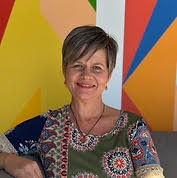
Many venture capitalists are making pledges to back under-represented founders (women founders and BIPOC entrepreneurs) but as we discussed yesterday, there’s evidence from minority and women founders that this isn’t translating into actual capital. Female CEOs at last count have received a dismal 2.7 percent of venture capital (VC) funding. And women of color CEOs get less than 1 percent, according to the incubator and research center DigitalUndivided’s Project Diane.
Addressing the lack of diversity in the venture capital space
To back women-led companies, early-stage financiers may need to consider the realities facing women entrepreneurs, especially in a post-COVID world, said Tara Sabre Collier, Social Entrepreneur in Residence at Oxford University, where she lectures on impact investment as well as diversity equity and inclusion. According to her, these realities include greater income losses and childcare burdens, in addition to disparities in access to capital.
“We need to look at actually building these considerations into the process and look at the role of having diversity internally and how that translates into having a diverse portfolio. A really big hurdle is that too many of these funds don't have diversity internally. We haven't actually changed the internal demographics of the VC funds in a way that would materially change their pipeline,” Collier explained. “It's not just awareness; it's actually being a diverse organization themselves.”
Sabre Collier understands these distinctions first-hand, as she told 3p: “As a woman of both African and indigenous heritage, these issues are close to me because they affect people that are in my family and people that look like me so it's much harder for me to ignore than for people that are further removed from these problems.”
Innovative solutions to bridge the venture capital and finance gaps
An early-stage investor that has taken a different approach is Lightspeed Ventures, which invests in technology-driven companies. Believing that women are the earliest adopters of consumer technology, female-fronted organizations represent over one third of its consumer portfolio and in the past five years, it has invested over $125 million in companies founded by female entrepreneurs.
“They form partnerships with a lot of emerging angels, often from underrepresented backgrounds, to find that pipeline,” Sabre Collier explained. “I think that's a really interesting model for making a VC more inclusive and starting to back more into underrepresented founders.
Then there’s the emergence of scout funds, where female entrepreneurs act as scouts and independently seek deal flow. Cleo Capital, led by prominent investor and entrepreneur Sarah Kunst, raised $3.5 million in 2019 for a debut scout fund.
As Kunst said in this Axios article, “There's a lot of response about diversity — gender and race — and there's a lot of conferences and panels and dinners celebrating or highlighting women in tech, but there hasn't been a change in where the capital goes.”
A shift is underway, but women entrepreneurs still face hurdles
Another innovative approach is rolling funds, or “always-open venture funds,” which enable fund managers to start investing as soon as capital from LPs (limited partners or investors in the funds) comes in. The W Fund, led by Kate Brodock and Allyson Kapin, is using rolling funds. In August 2020, they set a target of $48 million — representing the percent of funding (48 percent) that would need to shift from male-led founders to female-led founders to achieve gender parity in venture capital funding. And they are particularly targeting Black women founders who only receive about 0.0006 percent of venture capital investments, compared to 2.7 percent of women overall.
Another bright spot on the horizon is gender lens investing, which has grown from funds managing $2.2 billion in 2018 to 138 funds managing nearly $5 billion by 2020. In the aftermath of the death of George Floyd in police custody and a global Black Lives Matter movement gaining momentum, some of these funds have pledged that they would back greater shares of Black founders and Black and minority ethnic groups. As 3p has reported, racial justice and racial equity index funds have emerged as a tool to bring investor attention to this gap.
“The data is starting to come out about the early-stage financing gap. And I'm hearing lots of investors talk about how to solve it. I think change is coming,” Sabre Collier says. “There are many ventures that can power the world. But in order for the founders of those ventures to succeed, to drive us all forward as a global society, access to capital needs to be better distributed in a more equitable way.”
Image credit: Andrea Piacquadio/Pexels

Based in Florida, Amy has covered sustainability for over 25 years, including for TriplePundit, Reuters Sustainable Business and Ethical Corporation Magazine. She also writes sustainability reports and thought leadership for companies. She is the ghostwriter for Sustainability Leadership: A Swedish Approach to Transforming Your Company, Industry and the World. Connect with Amy on LinkedIn and her Substack newsletter focused on gray divorce, caregiving and other cultural topics.














